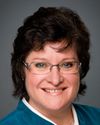Thank you very much, Madam Chair.
Thank you to all the committee members for inviting me to discuss the main estimates for the status of women program. I'm very happy to be here.
I trust you all celebrated International Women's Week last week and International Women's Day. I hope you had a good one.
Before I proceed, I would like to introduce my officials from the department who are here today. I'm joined today by Suzanne Clément, the head of agency at Status of Women Canada; Linda Savoie, who is our director general of the women's program; and Johanne Tremblay, who is our chief financial officer. I want to thank them for joining us at the committee and making time to be here with us.
In addition to discussing the main estimates, Madam Chair, I'd like to update you—because it's been a little while since I've had a chance to see all of you—on some of our current work and also highlight some of our recent achievements, particularly in the areas of recognizing the International Day of the Girl, which all political parties were involved in; gender-based analysis, which we've been working on with other government departments; and supporting grassroots projects through our women's program.
First, let me congratulate the committee for undertaking its current study on improving the economic prospects for Canadian girls. It is an important issue and I look forward to your report.
The main estimates, of course, for Status of Women Canada, you know from the report, will be $29.4 million for the 2012-2013 fiscal year, and of this amount $18.9 million will be allocated for grants and contributions under the women's program. As you know, our government support for community-based women's projects has almost doubled since we took office, and it's at its highest level ever.
Status of Women Canada's work remains focused on three priority areas: increasing women's economic security and prosperity; encouraging women's leadership and democratic participation; and of course ending violence against women and girls. With these priorities, Status of Women Canada is acting in a very targeted and efficient way. Our government is committed to responding to the needs of Canadians in a prudent and also fiscally responsible way.
As you know, internationally the United Nations Commission on the Status of Women is Status of Women Canada's primary focus. Last year I, along with Plan Canada, led the call for an international day of the girl to help raise awareness of girls' rights and to focus attention on the fact—of course, which we all know—that girls' rights are human rights. I was pleased that the House of Commons unanimously supported having Canada lead this international campaign, and I thank all political parties and members here for their support of this initiative.
After much hard work, the resolution designating the International Day of the Girl was adopted by the United Nations General Assembly on December 19 of last year. Canada will celebrate the first International Day of the Girl Child on October 11 this year, 2012. So 10-11-12—mark it in your calendars—will be the first of many days to come where we can focus on the issues that uniquely affect girls.
I've recently returned from this year's meeting at the UN Commission on the Status of Women, and I recount to you that everyone is very excited about celebrating this day. I was very proud that Canada was recognized as the leader in this initiative, and also inspired to hear what other countries were planning on doing for their day of celebration to highlight challenges in their own countries that girls face when it comes to human rights. This day is being seen around the world as an opportunity to highlight the positive contributions and leadership roles girls play in their communities, and of course to bring to light some of these most challenging issues.
Girls have plans. We heard from girls who are going to use this day as a way to raise awareness about their right to an education, access to health care, and their fight to stop.... Some of the very difficult challenges they face are in harmful cultural practices, such as honour-motivated violence, female genital mutilation, and forced marriages.
Status of Women Canada, as you know, plays a lead role in the implementation of gender-based analysis across government, otherwise known as GBA to many members on this committee. As you know, this is a tool that assists us in systematically integrating gender considerations—that is, of course, the unique attributes of men and women and how their circumstances may differ—into the decision-making process of government, and it helps us develop better policies.
As an example, officials from Status of Women Canada, at my request, recently met with the commissioner of the RCMP to offer our assistance, advice, and encouragement to conduct a gender-based analysis of its policies to support the RCMP in finding solutions to the issue of sexual harassment. Of course an essential element of conducting gender-based analysis is the availability of reliable information.
To meet this objective, 18 federal organizations were engaged to support the release of the sixth edition of Statistics Canada's Women in Canada, copies of which I am pleased to table with you today.
We're happy to be sharing that with you today. This is the work that Status of Women Canada did with Statistics Canada in compiling some excellent gender-based statistical information that can be used, of course, not only by the government but by NGOs and provincial, territorial, and municipal governments to understand better the situation of women across the country and to help them develop more responsive policies and programs. We'll be sharing a copy of that with all of you today.
The women's program continues to play a critical role in supporting the work of Canadian organizations at the local, regional, and national level to tackle the challenging issues of violence, economic security, and of course democratic participation. Through Status of Women Canada, we have supported now 500 new projects since 2007, again in three priority areas: improving women's economic security and prosperity, ending violence against women and girls, and advancing women in leadership roles and decision-making.
These projects invest where the need is greatest and where there is clear potential for making a difference in the lives of women and girls. Through targeted calls for proposals, Status of Women Canada has been able to support new organizations and expand its reach across the country.
This targeted approach has also provided Status of Women Canada with flexibility, which is key in responding to new and emerging issues facing Canadian women and girls. For instance, last fall we issued two new calls for proposals. One involved the engagement of young people, in particular students and student groups, to prevent violence against women on university and college campuses. This was a very innovative idea because we turned to students themselves and student organizations to ask them what they thought would work to address the issue of safety on campuses.
Just last week we were also able to announce the results of another call for proposals that we did last year that supports the advancement of women and girls living in rural and remote areas and small urban centres. We were able to announce 48 projects that will support the economic security and safety of women and girls in rural and remote communities. We believe, of course, that women's safety goes hand in hand with their economic security.
These projects are as diverse as the communities they will serve and the women and girls who live in them as well. A one-size-fits-all solution does not work, given the many different realities of rural, remote, and northern communities. For example, there is a local project in British Columbia that's going to develop a community response plan for support services, and to make their support services more accessible to women, while at the same time working on issues of violence.
In a project in Quebec, young women will work with stakeholders to develop a new economic plan that addresses the barriers they face. In Nova Scotia, Aboriginal women will be linked through a community plan that shares knowledge and helps address violence against women.
These projects also reflect Canada's theme for this year's International Women's Week, which is “Strong Women, Strong Canada--Women in Rural, Remote and Northern Communities: Key to Canada's Economic Prosperity”. This theme, of course, reminds us that Canada is a very vast country where nearly one in five women lives outside of large urban centres. We also brought along, to share with you—if you haven't received it yet—a compilation of all of the work we've done in regard to women and girls in rural and remote and northern communities, which outlines some of the projects that are happening across the country. We'll make sure we share that with you as well.
We do hope that this theme inspires Canadians to celebrate the unique lives of the more than three million women who live in over 5,000 rural, remote, and northern communities across this country. Together, all of these efforts provide women and girls with the knowledge, the skills, and the tools and resources that can and do facilitate their full participation in the economic, social, and democratic life of Canada.
I should also add that by using targeted calls for proposals it has allowed us more flexibility and it has responded directly to the government's objective of streamlining our practices and addressing some of the long-standing concerns about reducing the administrative burden that NGOs and community organizations had. We've had very good response about using these kinds of targeted calls for proposals from groups themselves.
Of course violence against women is an issue that cuts across communities, regions, provinces, and territories. Aboriginal women and girls are particularly vulnerable. The Government of Canada is committed to addressing this serious issue and is working with organizations across Canada toward this common goal.
Since 2007 the women's program alone—








